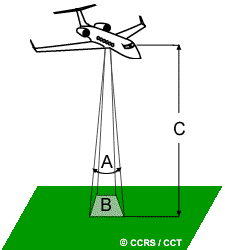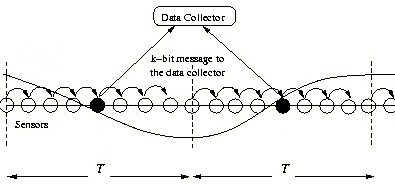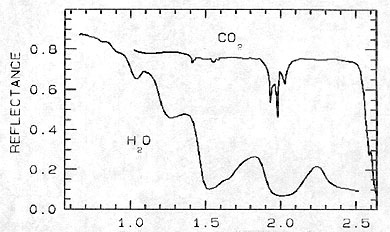 |
||
Remote Sensors and Data Collection - Data Quality |
|
|
We will now look at three important factors that closely affect the maximum obtainable resolution from a sensor. Review the definitions below. On the following pages you'll then be able to see how changes in these parameters would affect the data a remote sensor generates. |
||

|
Instantaneous Field of View : The angular cone of visibility of a remote sensor. It determines the area on the Earth's surface sensed at a particular moment in time. The area sensed is determined by multiplying the IFOV angle by the distance from the Earth to the sensor. This area is called the resolution cell and determines a sensor's maximum spatial resolution. |
|

|
Sampling Rate or Dwell Rate : The Dwell Rate of a sensor is how long it collects radiation at each IFOV area. A lower Dwell Rate means more data generated (sensor "dwells" on each spot less), but quality goes down for two reasons: 1) less radiation collected means a lower accuracy for the generated data, and 2) faster movement of the sensor implies a larger cross-track boundary dimension of each output pixel (i.e., lower image resolution). The activity on the previous page demonstrates the second reason. |
|

|
Spectral Range or Spectral Resolution : Different classes of features and details in an image can often be distinguished by comparing their responses over distinct wavelength ranges. Spectral resolution describes the ability of a sensor to define fine wavelength intervals. For example, sensors that can detect energy in a specific, narrow infrared region can generate imagery which distinguishes water from ice. |
|
|
To continue, click the forward arrow below |
||
Comments? Contact us. |
|
|